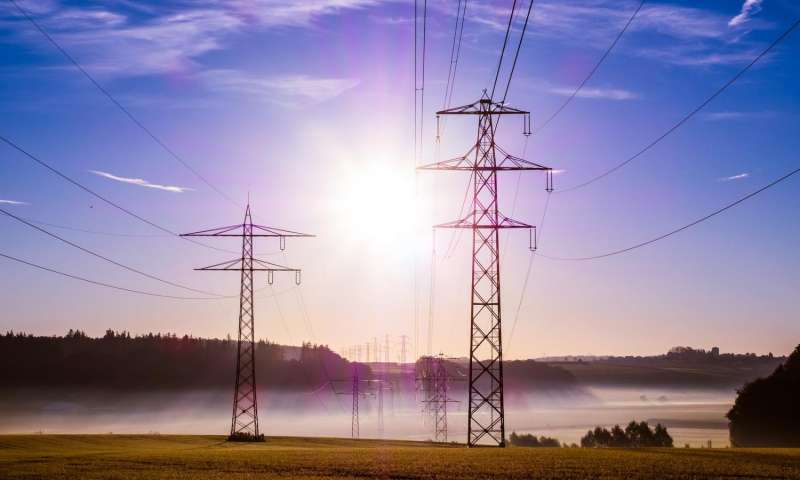ASU group shines light on African power needs
By East Valley Scottsdale Tribune
NFPA 70b Training - Electrical Maintenance
Our customized live online or in‑person group training can be delivered to your staff at your location.

- Live Online
- 12 hours Instructor-led
- Group Training Available
A graduate student and two professors at the Arizona State University Polytechnic campus in east Mesa have developed a device that produces electricity simply by burning twigs in a small combustion chamber.
Called a "Twig Light," it consists of a wafer-thin thermoelectric generator sandwiched between the combustion chamber and a heat sink. To generate electricity, the heat sink is placed in a shallow pool of water to keep it cool, and small twigs are burned in the upper combustion chamber to create heat.
The temperature difference runs the generator by producing five volts of electricity, which is enough power to run a bank of LEDs that can light up a room, said graduate student Michael Pugliese, a mechanical engineering technology student who invented the gadget.
Several prototypes were demonstrated last summer in the village of Domeabra, Ghana, where they were greeted with enthusiasm, said Brad Rogers, a professor of engineering technology.
For people who live far from electric lines or who can't afford electricity if it is available, the simple device promises life after dark, he said.
"It's difficult for someone from our world to know the wants and needs of someone in the developing world unless you sit down and talk with them," he said. "When we sat down with villagers in Ghana, one of their most common comments was they wanted light. They have to go to sleep when it gets dark."
The alternatives are not very effective or affordable for people whose income is about $1 a day, Rogers said.
Kerosene and solar lanterns are expensive. Flashlight batteries wear out quickly and can't be recharged without electricity. But the Twig Light can be run by burning wood and charcoal left over from cooking fires, making use of energy that currently goes to waste, Rogers said.
"There is no increased use of wood. They are not using resources that they wouldn't be using anyway," said Mark Henderson, another professor in the College of Technology and Innovation who also is working on the project.
With functioning LED lights, which require far less energy than incandescent lights, villagers can read or have a social life after dark, and youngsters can check their beds for snakes and other unpleasant critters before they sleep, Rogers said.
The Twig Light also could be used to produce electricity for recharging cell phones, which are becoming ubiquitous in Africa, or even powering small refrigerators, the professors said.
The Twig Light project has received a $16,000 grant from the Massachusetts-based National Collegiate Inventors and Innovators Alliance to perfect the final design of the device. The inventors hope to increase its efficiency and streamline its design.
"It may seem strange, but (the African villagers) want us to make it 'cool,'" Henderson said. "The shape and color are important to them."
Rogers and Henderson are incorporating the project in a three-course package over three semesters on the developing world, beginning in January. The first course will focus on understanding underdeveloped nations, the second will include a trip to Africa to speak directly with villagers and the third semester will produce solutions to meet their needs.
About 24 positions will be available, and prospective students will be subject to personal interviews before being accepted to the courses, Rogers said.
"We expect that students will take it very seriously," he said.
GlobalResolve is a program established by a group of ASU professors in 2006 that is designed to involve ASU technology students in projects that could improve the lives of people in underdeveloped nations.
In the ensuing years, the program has produced several projects for Africa, including alternative cooking fuels, improved stoves and clean water projects.
Pugliese developed the Twig Light in a GlobalResolve class on Village Energy Systems taught by Rogers. The students were required to develop projects that would help people whose income is only a few hundred dollars a year, and the Twig Light was his contribution.
Eight prototypes were taken to Ghana last summer, and seven were left in Domeabra for the villagers to test after the ASU students returned to the United States. At last report, they were still functioning, even though "we were expecting them to all fall apart," Rogers said.
The device has the advantage of having no moving parts, Henderson said. The tiny thermoelectric generators, which were made in China, are cheap and simple and can be purchased at Walmart, he said. They are used in this country to run lights for camping and for wine coolers, he said.
The professors hopes to find Ghanian entrepreneurs who would locally produce and distribute the Twig Light, thereby contributing to the African economy while solving a problem of village life.
"We think that within a year, we will be in the villages with production models," Henderson said.











